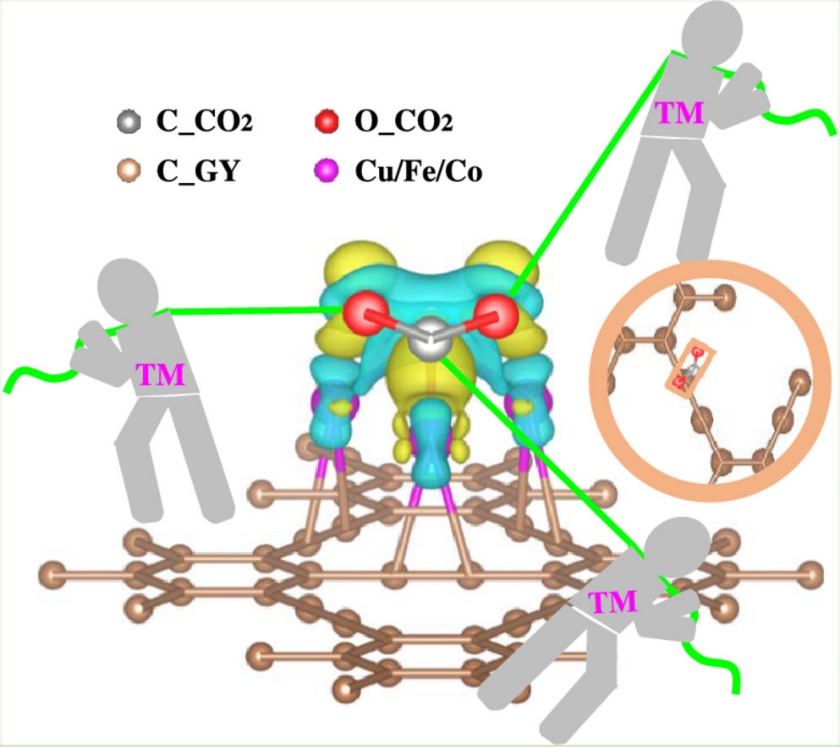
近日,课题组博士生周赛男论文“Triple-atom catalysts 3TM-GYs (TM = Cu, Fe, and Co; GY = graphyne) for high-performance CO2 reduction reaction to C1 products”被Applied Materials Today(2021年中科院SCI期刊一区TOP期刊,IF=10.041)接收!
Atomically dispersed catalysts are promising materials for alleviating greenhouse effect and reproducing valuable chemical products through electrochemical CO2 reduction reaction (CO2RR). Here, earthabundant triple transition metals (TM = Cu, Fe, and Co) anchored on graphyne (3TM-GY) were evaluated in CO2RR to C1 products by using density functional theory. Structural analyses showed that 3TM-GYshad high cohesive energy ranging from 6.91 to 6.98 eV/atom, and large binding energy ranging from 2.28 to 5.95 eV, guaranteeing structural stability in CO2RR. Electronic structure analyses confirmed the evidentorbital overlap and large charge transfer between the triple TM atoms and direct-connected C atoms. Theunique triangular TM trimer on GY facilitated the “point-to-point” activation of CO2 with large adsorptionenergy and distinctly bent configuration, providing a favorable adsorption and initial activation environment in CO2RR. 3Cu-GY exhibited a prior CO2 reduction product of CH4 with a low limiting potential of -0.41 V and high selectivities over other C1 products of 102– 108, which surpassed the vast majorityof atomically dispersed electrocatalysts. When applied potential was increased, CO2RR on 3Cu-GY had a great advantage in the high-throughput reaction processes toward HCOOH and CH4, whereas that on 3Fe-GY/3Co-GY had a great advantage toward high-reduction degree products of CH3OH and CH4. Moreover, hydrogen evolution reaction was severely inhibited, and CO2RR exhibited an overwhelming advantage over HER. This work demonstrated that graphyne was a suitable substrate material for constructing favorable coordination environment anchoring triple atom, and highlighted the advance of triple-atom catalysts for high-performance CO2RR.
https://www.sciencedirect.com/science/article/pii/S2352940721003085